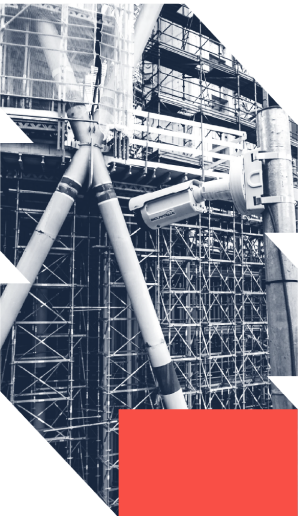Three Projections for the AEC Industry in 2024

After a year of interesting advancements due to the surge of AI in the AEC industry, expectations for 2024 are rising.
However, this market sector and its growing startup ecosystem still face many challenges.
Francisco Maranchello, COO of e-verse, explains our point of view in this exciting, changing space.
1: AI, The Buzzword of the Day
As always, in the tech industry, there’s a buzzword. Like IoT in 2015, or blockchain in 2019, in 2023, that’s Artificial Intelligence.
“What’s interesting to me is that, although other industries have been impacted more by this technology so far, and that there have been interesting developments in our industry too, there are many opportunities yet to be explored.
Even though many smart people are working on AI for image generation and full design automation, both areas are intricately related to the AEC industry; there is still so much to be created”, Francisco added, regarding AI specifically applied to the AEC industry.
Other industries like software or manufacturing have modularized their knowledge and designs, but AEC starts almost from scratch on every project in architecture.
We’ve recently seen increasing developments focused on leveraging BIM data to provide insights to users about their models, perform direct actions on those models, and use existing data to feed future designs, going from massing to, say, 70% of the design -not trying to automate everything, but going most of the way and leaving the rest of the creative part to humans-.
Hopefully, this trend will continue advancing as we see startups in this space like Skema grow.
Solutions like this, associated with software suites that arrive to automate repetitive tasks and integrate into existing models, will continue to permanently change time allocation, enabling individuals to accomplish in hours what used to take them weeks.
AI-driven image generation and design automation mark a new era in construction and design. These technologies enable architects and engineers to rapidly visualize and iterate building designs, fostering innovation and efficiency.
AI image generation transforms conceptual ideas into vivid visuals, aiding in client presentations and decision-making. Meanwhile, AI in design automation streamlines workflows, reduces human error and accelerates project timelines. Together, they empower the AEC sector with precision, speed, and creative freedom, setting new standards in building design and construction
Another area related to AI that’s been making huge progress is robotics. Robots haven’t gained widespread adoption and high-scale production in the industry, but this is definitely a sector to keep an eye on in 2024 – once things break loose, the AEC will be one of the most impacted industries in a robotics “revolution”.
2: BIM in the Cloud

BIM in the cloud refers to using Building Information Modeling software and data storage on cloud-based platforms. It involves accessing, sharing, and collaborating on BIM-related information and models using cloud technology, enabling real-time collaboration and easier access to project data from various locations.
It’s an old topic that’s still mostly unsolved. We’re yet to see a platform that’s natively cloud-based, light, fully collaborative, browser-based, and thus platform-agnostic that gains widespread market adoption.
There are startups like Snaptrude working on this that we believe will continue to grow and gain traction here. VCs jumping into this space seem to agree.
Autodesk is also in the race. From their CEO’s keynotes at this year’s Autodesk University, their intention is to keep three main products, all cloud-based: Forma, Fusion, and Flow, each for one of their biggest industry markets: AEC, Manufacturing, and Media, respectively.
Speaking about the AEC side specifically, we’re looking at Forma. It’s aiming towards what we described here – a browser-based tool for BIM – and Autodesk is betting strongly on it. We hope to see more in the coming year.
3: Data Bridges and Interoperability
Data bridges play a crucial role in achieving interoperability within systems. They act as connectors or interfaces that facilitate the exchange of information between different platforms, formats, or systems.
Interoperability, on the other hand, refers to the ability of various systems or software to work together and use exchanged data effectively.
Essentially, data bridges enhance interoperability by enabling seamless communication and data transfer between disparate systems, ensuring they can understand and utilize information from one another.
“Another huge issue for our industry is that it’s historically fragmented into dozens of software platforms with different data schemas across a single project’s lifecycle”, Francisco added.
Increasingly, it seems that we as a whole are giving more and more importance to the “I” in BIM and being more mindful of the data we produce and how it travels downstream as we develop projects.
On this side, startups like Speckle have been playing for years, developing APIs as bridges to connect and manage data across multiple systems.
Autodesk, as part of the three products mentioned before, is aiming at bridging the gaps in between with Autodesk Platform Services, their set of APIs.
It’s surely a large problem with room for many more players – hopefully, an area that will grow in 2024.
A Surge in AEC Startups

“It’s great to see more and more startups created in the AEC space, along with VCs that are starting to focus specifically on this industry. It already happened in other industries and is long overdue for ours”, Francisco commented enthusiastically.
Many more smart people are starting to look at the huge problems construction in general faces, and bringing innovative solutions to them. It feels like the number of startups participating in the AEC space is surging – and we want to empower that through our startup and investor community: AEC works.
The three main topics mentioned above are some we believe will be hot next year, but as we move into 2024 with the pace things are moving at, I feel like I’ll look at this article one year from now and say, “I had no idea what was coming”. But that’s what’s exciting about technology!
Francisco Maranchello
A proactive entrepreneur at heart who constantly seeks new challenges. As an Architect who codes, I have broadened my skill set through a passion for technology and innovation. I believe technology is the future of architecture and the built world. Always learning and leveraging cutting-edge technologies to seek new answers, I bring a holistic approach when facing new challenges.
